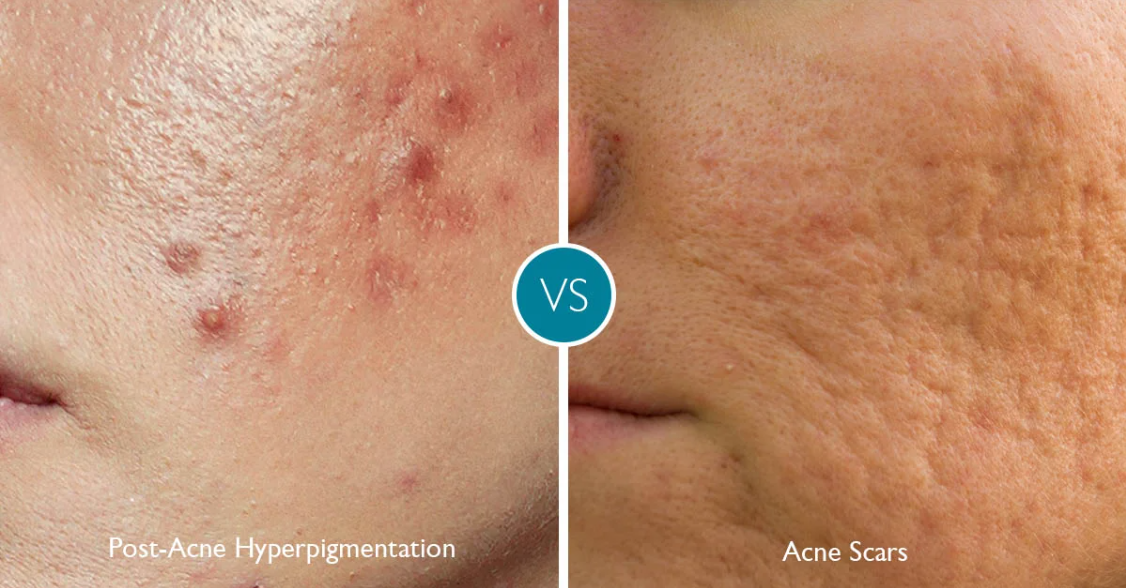Introduction
Acne may fade, but the scars it leaves behind can be just as frustrating. From shallow marks to deep indentations, acne scarring affects confidence and skin texture. Thankfully, today’s dermatology offers multiple ways to smooth scars and restore an even complexion. Two of the most popular options are chemical peels and microneedling—but which treatment is right for you?
Understanding Acne Scars
Not all acne scars are the same. The type of scar you have determines which treatment will be most effective.
-
Atrophic scars – shallow depressions (ice-pick, boxcar, or rolling scars).
-
Hypertrophic scars – raised scars from excess collagen.
-
Post-inflammatory hyperpigmentation (PIH) – dark marks left after acne heals.
Chemical Peels for Acne Scars
What They Are
Chemical peels use exfoliating acids (like glycolic, salicylic, or trichloroacetic acid) to remove the outer layer of skin. This promotes new cell turnover, fades pigmentation, and smooths texture.
Best For:
-
Post-inflammatory hyperpigmentation (brown or red spots).
-
Shallow surface scars and uneven tone.
Benefits:
✔ Improves brightness and overall skin texture.
✔ Quick, in-office procedure with little downtime (mild peels).
✔ Affordable compared to advanced treatments.
Considerations:
✘ Multiple sessions needed for deeper scars.
✘ Can cause redness, peeling, or irritation.
✘ Strong peels may not be suitable for darker skin tones without dermatologist supervision.
Microneedling for Acne Scars
What It Is
Microneedling uses fine needles to create controlled micro-injuries in the skin. This stimulates collagen and elastin production, improving the skin’s structure from within.
Best For:
-
Atrophic scars (rolling, boxcar, mild ice-pick).
-
Enlarged pores and overall skin texture.
Benefits:
✔ Stimulates natural collagen repair.
✔ Safe for most skin tones when done professionally.
✔ Results improve over several sessions.
Considerations:
✘ Downtime may include redness and mild swelling for 1–3 days.
✘ Not ideal for active acne or very deep scars without combination treatments.
✘ Best results seen after 3–6 sessions.
Other Treatments Worth Considering
-
Laser Resurfacing – precise targeting of scars with fractional lasers.
-
Fillers – temporary volume correction for deep indentations.
-
PRP (Platelet-Rich Plasma) or Exosome Therapy – accelerates healing and boosts microneedling results.
-
Topical Retinoids or Retinol Alternatives – improve skin turnover and pigmentation over time.
Which Treatment Is Right for You?
-
Hyperpigmentation only? → Start with chemical peels or topical acids.
-
Textured, indented scars? → Microneedling is more effective.
-
Combination scars? → A mix of treatments (peels + microneedling, or lasers) may be best.
-
Sensitive or darker skin tones? → Gentle peels or microneedling with professional oversight are safest.
Always consult a board-certified dermatologist to customize treatment to your skin type, scar severity, and goals.
Key Takeaway
Both chemical peels and microneedling are powerful options for acne scarring, but their effectiveness depends on the type of scar you have. Peels are best for discoloration and surface marks, while microneedling helps rebuild structure in indented scars. For many, a combination of treatments delivers the best results.
At Purelab Care, we emphasize science-backed, halal-certified skincare that supports skin health before, during, and after professional treatments—because scar recovery is about more than procedures, it’s about long-term skin resilience.



